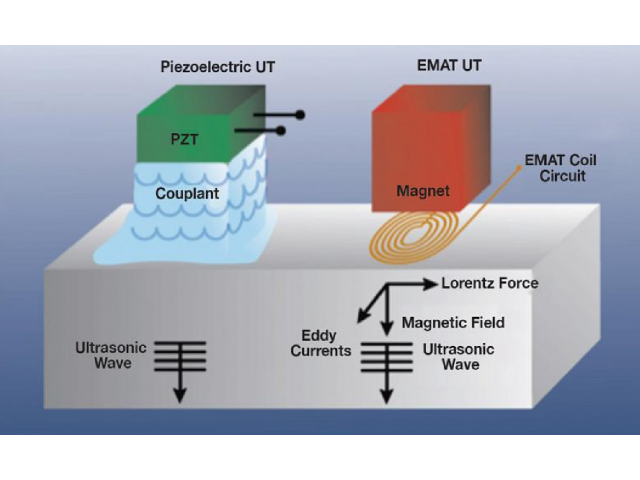Ultrasonic methods
Ultrasound is a wave-based method where an elastic wave generated by a transmitter propagates through the material, is reflected and transmitted at impedance contrasts and is finally recorded by a receiver. While the wave propagates through the material, ultrasonic parameters are significantly affected by changes in microstructural or mechanical material properties. These parameters are, firstly, the amplitude of the wave and, secondly, the so-called time-of-flight, i.e. the time the ultrasonic wave needs to propagate from the transmitter to the receiver. From these two quantities, different kinds of material properties can be derived e.g., sound velocity, density, tensile strength, etc. Hence, ultrasonic materials characterization can be used in order to assess the damage of metallic components due to various degradation mechanisms like embrittlement, fatigue, creep, and corrosion. In order to generate ultrasonic waves, two different kinds of transducers can be used. Piezoelectric transducers are based on the piezoelectric effect and can be applied to any kind of materials. The ultrasonic wave is generated in the transducers. Hence, a couplant is used in order to improve the mechanical contact between transducer and component. Electromagnetic acoustic transducers (EMAT) represent an alternative where a couplant cannot be applied as they generate the ultrasonic waves directly in the material. However, their application is limited to ferromagnetic and/or electrically conductive materials. Both kinds of transducers are capable of exciting different wave modes, selected depending on the application.
